
Photographer Michael Wolf has taken? culled? street photography from Google Street View, Paris (and the work is quite captivating) »
Also worth mentioning: Wolf's Chicago Series, The Transparent City »
all over the map (but mostly chicago.il.us)

 Made the Gapers Block spot with a shot I took at Second Pres on the near South Side not too long ago. Needed that little ray of sunshine -- my work life has mostly devoured my creative life of late (not that work isn't creative, it's just not purely selfish creative).
Made the Gapers Block spot with a shot I took at Second Pres on the near South Side not too long ago. Needed that little ray of sunshine -- my work life has mostly devoured my creative life of late (not that work isn't creative, it's just not purely selfish creative).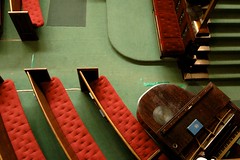
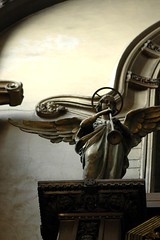
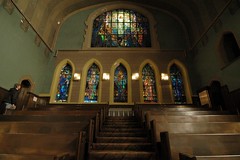
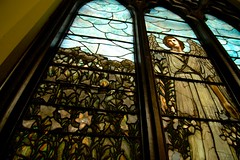
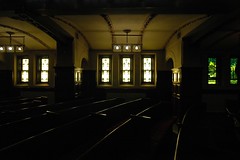
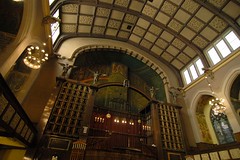
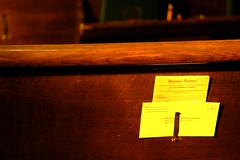
I am not discouraged. Things will right themselves. The pendulum swings one way, and then another, but the steady pull of gravitation is toward the center of the earth. Any structure must be plumb to endure. So it is with Nations: Wrong may seem to triumph. Right may seem to be defeated, but the gravitation of eternal justice is toward the throne of God. Any political institution which is to endure must be plumb with that line of justice.
If indicted, Mr. Blagojevich would be the fifth of the last eight elected Illinois governors to be charged with a crime, and if he is sent to jail, the fourth to serve time.

The First United Methodist Church at the Chicago Temple has installed a crucifix made from a cast of a cross burned at a 1963 KKK rally.
Sweet Grama:
I hope this finds you well.
Wanted to let you know about a road trip we took over the weekend to Great Gram’s home town of Marseilles, Illinois -- it’s just a short drive from where I'm living now. Strange that I’d transplant myself halfway across the country to arrive just two hours distant from the little town where your grandparents, just arrived from Norway, first got started in America.
Marseilles is seated in a wide squat along the I&M Ship Canal -- the waterway that snakes out this way from the city and was part of the engineering effort behind reversing the Chicago River. The box factory that you told me about, where your grandfather Soren worked, sits alongside it.
We drove through Marseilles a few years back when the factory was still in operation: At that time the sign out front read Phil Container. That changed in the last year: I spoke with a Marseilles lifer at the Coyote Cafe, where we stopped for breakfast (biscuits and gravy topped with scrambled eggs) and she told me that Nabisco (she called them the National Biscuit Company) ran it for years and years before they sold it to Phil.
It was only this last year that the jobs were sent overseas and the factory was boarded up. Whole town’s hurting, she told me. A couple other large industries recently sent their work to Asia and Mexico. The little town, that felt quiet and quaint the last time we passed through, felt a bit desolate and deserted. Johnny Cash spilled into the street from PJs biker bar at 9AM.
I took a few pictures of the factory -- soon as they’re developed I’ll send copies. I imagine it was a lovely little town once upon a time, framed as it is by sandstone bluffs and run through by the cool green banks of the Ship Canal. The Illinois River skims its outer boundary.
Came to understand over the couple days that we spent out that way why Great Gram loved Lake Michigan lake water so much that she asked you to bring back a mason jar full when you and Bompa traveled to Chicago for that Shriner’s convention. The water in the region is loaded with minerals: so much that it’s somewhat salty, and gave me a stomachache. She must have fallen in love with the city’s water when she moved, finally, to Humboldt Park.
Our plan was to follow the river to Starved Rock -- a sweet little State Park where we planned to do some hiking -- but first we detoured through Norway, Illinois, just north of Marseilles. It turns out this sleepy little spot is where a fellow named Cleng Peerson set up shop with a whole boatload of Norwegians back in 1825. The sign claims Norway is the first “permanent settlement of Norwegians in America” -- no doubt to ensure that no one confuses it with the Vinland, the first Norwegian settlement in North America in the early 1000s. As we all know. And must remind others. Persistently.
Unfortunately the Norsk Museum doesn’t open until 1PM on the weekends, so we didn’t have a chance to peek inside. Near the road marker to Cleng and his clan that named Highway 71 the Cleng Peerson Memorial Highway, and commemorated their settlement with a profusion of plaques, flags and a kiosk topped with an architectural flourish better suited to a stave kirke, there was a tongue-in-cheek memorial to the farmers and business folk who weathered the agricultural crash of the 1980s -- in the form of a crashed plane by the roadside.
Which left the impression that times have been tough in Norway, too.
I love you. I’ll send pictures soon.
Your granddaughter.


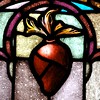




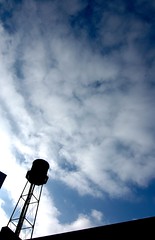



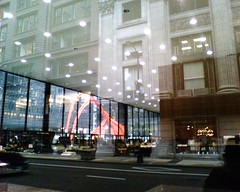
let me keep my mind on what matters
which is my work
which is mostly standing still and learning to be
astonished

www.flickr.com
|
